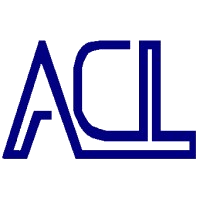Forecast Bright for Imaging Procedures Despite Cuts, Says Report
ROCKVILLE, Md., Oct. 18, 2017 /PRNewswire/ -- Kalorama Information said that while the large 'imaging boom' of the past decade may be over, there is still reasons to be optimistic about the imaging market and the amount of procedures performed for major modalities. There were 630 million imaging procedures performed in the United States in 2016 and 164 million in China the same year. The finding was made in the publisher's report, Global Imaging Procedure Volume Analysis. X-ray, computed tomography, MRI, PET and ultrasound are among the procedures covered in the report.
Healthcare spending had been on a torrid pace in the US and many other countries, and the spending has become difficult to sustain economically. In recent years, expenditures covering medical imaging procedures increased at a much faster rate than those for most other medical services. The rapid growth caused some drastic reductions in Medicare payments for individual imaging services. Moreover, radiology benefits managers (RBMs) have been used more extensively by private payers. RBMs are widely used to manage the use of imaging services through prior authorization.
"More than one-in-twelve Americans are considered 'old,'" said Bruce Carlson, Publisher of Kalorama Information. "There exists a growing and aging population, and that is a big driver for imaging sales. Though with cuts from major world health systems, vendors will have to innovate."
Generally, attempts to reduce medical imaging expenditures have focused on unit cost reduction strategies for the most part. Changes in practice expense data, equipment utilization estimations, and other calculation methodologies by the Centers for Medicare and Medicaid Services (CMS) have similarly resulted in reductions in imaging payments, particularly at the technical component level. Both the professional and technical components of payment have decreased, by at least 50%, through several procedure payment reductions for contiguous body part imaging. Many policy leaders and insurers have generated changes aimed at slowing or reversing the rapid growth of medical imaging modalities, with the additional intention of achieving less medical imaging usage. Many doctors have become aware of the burden of expensive unnecessary testing and care on patients as well as the healthcare enterprise. So, many are knowledgeable of an increasing body of literature addressing the cost effectiveness of existing and emerging technologies. This has spurred an inclination toward more careful considerations over the use of medical imaging. And these trends are expected to continue for the near term worldwide.
A number of factors have driven the need for medical imaging diagnostic procedures:
-- The US Census Bureau predicts that the majority of the US baby boom
population - nearly 30% of the total US population -- will have turned
65 between 2010 and 2020.
-- By 2050, the 60-and-older population will increase from 680 million to 2
billion -- increasing from 11% to 22% of the world's population.
-- From 1950 to 2050, the world population will have increased by a factor
of 3.6; those 60 years of age and older will have increased by a factor
of 10; and those 80 years and older, by a factor of 27.
-- By 2050, Europe will continue to be the world's oldest region with its
elder population increasing from 40 million to 219 million.
-- Yet, only 5% of Africa's population is projected to be 65 and older by
2050, with sub-Saharan Africa remaining the world's youngest region.
-- China and India have the largest older populations. By 2050, China will
see its number of elders grow 30% from 109 million to 350 million, and
in India, this portion of the population will increase from 62 million
to 240 million.
Evolving trends in the market are creating mixed growth prospects for medical imaging products. The expansion and aging of the population is favorably influencing product demand and utilization, which is leading to a greater diagnosis of disease, disorders, and other health conditions. The increasing prevalence of cancer, heart ailments, and orthopedic impairments will contribute especially strong growth momentum to the volume of medical imaging procedures performed and to the sales of related equipment and consumables.
Among the significant positive influences on the medical imaging product market and the number of imaging procedures is the increasing adoption of value-based patient care strategies. The increasing adoption of value-based patient care strategies will spur healthcare providers to pursue optimized therapeutic efficiencies and health outcomes. This will encourage greater application of medical imaging procedures in the detection of health conditions and in the monitoring of patient treatments.
Advances in technology represent another key driver of growth in medical imaging product demand. New systems introduced during the past few years incorporate much broader and more sophisticated testing capabilities than earlier-generation models. In one instance, 128-slice and 256-slice CT systems can detect early symptoms of heart attacks.
It's not all upside, according to the report. The tightening of healthcare cost containment initiatives will comprise the principal moderating influence on overall growth prospects for medical imaging products. Stricter controls on reimbursement rates will dampen the revenues generated by hospitals, outpatient facilities, and physicians' and dental offices. As a result, these establishments will become increasingly frugal in allocating investments for new medical imaging systems.
Kalorama Information's report Global Imaging Procedure Volume Analysis is available on the company's website. The report is also included in Kalorama's Knowledge Center, which features all of the firms published research in one interface.
About Kalorama Information
Kalorama Information, a division of MarketResearch.com, supplies the latest in independent medical market research in diagnostics, biotech, pharmaceuticals, medical devices and healthcare; as well as a full range of custom research services. Reports can be purchased through Kalorama's website and are also available on www.marketresearch.com and www.profound.com.
We routinely assist the media with healthcare topics. Follow us on Twitter, LinkedIn and our blog on our company website.
Press Contact:
Bruce Carlson
212 807 2262
bcarlson@marketresearch.com
View original content with multimedia:http://www.prnewswire.com/news-releases/forecast-bright-for-imaging-procedures-despite-cuts-says-report-300538942.html
SOURCE Kalorama Information




